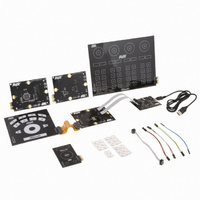ATQT600 Atmel, ATQT600 Datasheet - Page 68

ATQT600
Manufacturer Part Number
ATQT600
Description
KIT EVAL TOUCH FOR QT600
Manufacturer
Atmel
Series
QTouch™r
Specifications of ATQT600
Sensor Type
Touch Screen
Interface
USB
Embedded
Yes, Other
Utilized Ic / Part
ATtiny88, ATmega324PA, ATxmega128A1
Processor To Be Evaluated
ATtiny88, ATmega324, ATxmega128
Data Bus Width
8 bit, 16 bit
Interface Type
USB
Maximum Operating Temperature
+ 85 C
Minimum Operating Temperature
- 40 C
Operating Supply Voltage
1.6 V to 3.6 V
Silicon Manufacturer
Atmel
Kit Application Type
Sensor
Application Sub Type
Touch Sensor
Kit Contents
USB Bridge, MCU Cards, Touchpad Cards
Svhc
No SVHC (15-Dec-2010)
Mcu Supported Families
ATtiny88,
Rohs Compliant
Yes
Lead Free Status / RoHS Status
Lead free / RoHS Compliant
Voltage - Supply
-
Sensitivity
-
Sensing Range
-
Lead Free Status / Rohs Status
Lead free / RoHS Compliant
Available stocks
Company
Part Number
Manufacturer
Quantity
Price
Company:
Part Number:
ATQT600
Manufacturer:
Atmel
Quantity:
135
10620D–AT42–04/09
Glossary of Terms
A-2
Linearity
Multi-touch
Mutual-capacitance Sensor
Node
Non-planar Construction
One-dimensional Sensor
Panel
The measurement of the peak-to-peak deviation of the reported touch coordinate in one axis relative
to the absolute position of touch on that axis. This is often referred to as the nonlinearity.
Nonlinearities in either X or Y axes manifest themselves as regions where the perceived touch
motion along that axis (alone) is not reflected correctly in the reported coordinate giving the sense of
moving too fast or too slow. Linearity is measured as a percentage of the axis in question.
For each axis, a plot of the true coordinate versus the reported coordinate should be a perfect straight
line at 45°. A non linearity makes this plot deviate from this ideal line. It is possible to correct modest
nonlinearities using on-chip linearization tables, but this correction trades linearity for resolution in
regions where stronger corrections are needed (because there is a stretching or compressing effect
to correct the nonlinearity, so altering the resolution in these regions). Linearity is typically measured
using data that has been sufficiently filtered to remove the effects of jitter. For example, a 100 mm
slider with a nonlinearity of ±1 percent reports a position that is, at most, 1 mm away in either
direction from the true position.
The ability of a touchscreen to report multiple concurrent touches.
See also Two Touch.
A sensor with two connections to two parts of the sensor: an X (transmit) electrode, and a Y (receive)
electrode. The mutual capacitance from X to Y is measured by the sensor controller. This type of
sensor is suitable for implementating sensors for use with QMatrix
See also self-capacitance sensor.
One of the capacitive measurement point at which the sensor controller can detect capacitive
change. A node and a channel are really the same thing, but the term node is used in the context of a
touchscreen or slider as it conveys the sense of spatial distribution better.
See also channel.
A method of construction in which the electrodes are fabricated on the inner surface of the touch
panel, with the rest of the touch sensing circuitry on the main capacitive touch circuit board and
remote from the electrodes. This form of construction has several advantages over a planar form of
construction. See
See also planar construction.
A sensor that detects the linear movement of a finger during touch (that is, along a single axis).
Typical implementations of one-dimensional sensors are sliders and wheels.
The front, or uppermost, layer of a touchscreen or touchpad that is touched by the user. Common
front panel materials include glass, plexiglas, polycarbonate and PMMA.
Section 3.3 on page
3-7.
™
sensor
Touch Sensors Design Guide
controllers.













